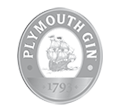 Patience Gould revisits the Martini question
Patience Gould revisits the Martini question
In the recent remake of Casino Royale, Daniel Craig’s Bond no doubt sent shock waves through Martini aficionados around the world when he orders a Vodka Martini; nothing odd in that of course, but when the bartender asks – “Shaken or stirred?” and he replies “Do I look as if I give a damn?” Well that’s very odd indeed, considering Bond has demanded his Martinis and his Martini Vespers to be “shaken not stirred” for the last 50 years.
The shaken or stirred debate reverberates around the world on a continuous loop, and, as the Martini has evolved over the years from its early days in the mid 19th Century, it’s been a matter of taste. Currently though the thinking is heavily in favour of stirring, not shaking.
So why would Fleming’s famous spy, Bond who epitomises style and panache traditionally favour shaken? Interestingly Grey Goose’s UK brand ambassador, Joe McCanta has a theory which he expounded during London’s Cocktail Week, and it’s all to do with time. Bond never lingers over his Martinis and in the first 10 seconds, (give or take!) a shaken Martini is massively colder, in fact -8 degrees centigrade colder than its stirred counterpart – so ideal to be consumed in a couple of swigs the Bond way. Also Bond’s Martinis were smallish by today’s standards.
Of course the shaken or stirred is just one facet of the Martini fascination and the options open to anyone ordering the cocktail today are huge. Do you go with gin or vodka, or both as in the case of the Vesper – do you want it dry or wet, which garnish to prefer, which bitters, which vermouth to select, the list of possibilities goes on. But it all means that you can build your Martini according to whatever mood you are in – indeed it is the most bespoke of all cocktails.
Even the beginnings of the Martini are open to debate – which only adds to the cocktail’s allure – but two things are for sure: it was born in America and it was always traditionally made with gin, vodka did not make its debut until 1905. As early as 1850 there was The Fancy Gin Cocktail, which paired Old Tom gin with orange Curaçao, then the most commonly used sweetener in cocktails. Some two decades on Italian vermouth made its way to America, with French vermouth following suit in the 1890s. Subsequently the marriage made in heaven that is vermouth with spirits, but gin in particular, was discovered.
It’s generally accepted that the Martinez was the precursor to the Martini, and it was the period between 1882 and 1910 which witnessed the development of family related drinks including the Martini, the Marguerite, Martine, Martigny, Martini, Martineau, Bradford a la Martini and the Martini di Arma di Taggia. In O H Byron’s Modern Bartenders Guide (1884) the Martinez does not take centre stage, instead it’s described as a version of a Manhattan but using gin instead of whiskey! Around this time olives and lemon peel begin to take their Martini bow – there was a brief resurgence of the ‘cherry’ in 1895 but after just two years an article in the Centralia Enterprise and Tribune declared that “Cocktails no longer contain a cherry…grillrooms now serve olives.”
However it was in the second edition of Harry Johnson’s Bartender Manual (1887) that the Martini recipe finally made its debut in print – the ingredients, still on the sweet side, included Old Tom Gin, sweet vermouth, orange curaçao, gum, Boker’s Bitters and a lemon twist. Then the turning point for the drier Martini style came when one William Thomas Boothby called for it to be stirred with Angostura bitters and a lemon twist. But it was not until 1903 that the idea of a Dry Martini, using dry vermouth took hold, thanks to a mention in the second edition of Stuart’s Fancy Drinks.
Up until now the gin used in these concoctions was not specified, but in 1904 Applegreen’s Bar Book included two recipes for the Crisp Cocktail and the Olivette. Both called for equal measures of Plymouth Gin and dry vermouth but the Crisp was stirred with two dashes of orange bitters and a lemon twist, while the Olivette called for Peychaud’s Bitters, stirred with an olive.
In the following year vodka entered the Martini fray, and with the awful advent of World War 1, vermouth was short in short supply so the Martini became ever drier, and then of course Prohibition came into force Stateside lasting from 1920 – 1933. Neither of these life-changing events detracted from the importance of the Martini, and it was in 1922 that the great debate over whether to stir or shake took hold.
Three books published in the 1920s, Harry McElhone’s ABC of Mixing Cocktails and Robert Vermeire’s Cocktails: How to Mix them, helped fuel the debate along with Harry Craddock’s The Savoy Cocktail Book (1930). The latter features all different styles of Martini – dry through to sweet – and interestingly all are shaken. It was in 1940 that Lucius Morris Beebe’s Stork Club Bar Book came out. In it he advised bartenders to go with the consumer’s wishes, but other wise to stir, as the only difference between the two methods was in the appearance. Talk about sitting on the fence!
With the advent of World War 2 vermouth’s role in the Martini became even more reduced due in part to on-going supply matters but also taste and the plethora of devices designed to minimise its addition to the cocktail which came to the fore, including syringes, pipettes and atomisers. Post War, the in and out method took hold, whereby vermouth is swilled in and around the glass and then chucked. By now, in the 1950s the Martini was a way of life on both sides of the Atlantic, where the great and the good, celebrities as well as politicians took to the cocktail big time.
Fitting then to leave the last word with Noel Coward, who like James Bond, epitomised the suave and sophisticated man about town; he suggested that a perfect Martini should be made by “filling a glass with gin then waving it in the general direction of Italy” – clearly neither a shaken or stirred man – but very very
dry!




